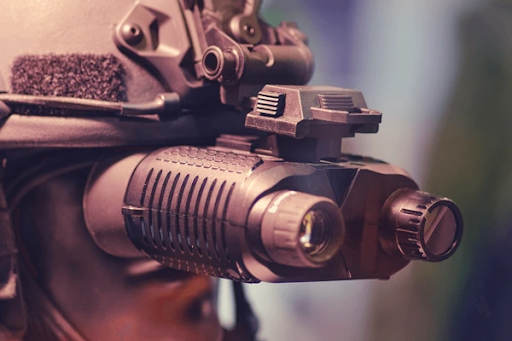Night vision helmet mounts are essential for enhancing nighttime visibility and performance. This guide explores the different types of mounts, their importance, and how to install them. It also covers optimizing performance, critical factors for use, and common mistakes to avoid.
Additionally, it provides maintenance tips and alternative mounting options for night vision devices, offering a comprehensive overview of everything you need to know about night vision helmet mounts.
What Are Night Vision Helmet Mounts?
Night vision helmet mounts are essential for securely attaching night vision goggles to helmets, ensuring stability and ease of use during nighttime missions. Produced by companies like Wilcox, Norotos, and Team Wendy, these mounts come in various types with features to cater to specific needs and preferences.
What Are the Different Types of Night Vision Helmet Mounts?
Different night vision helmet mounts, such as the RHNO, dovetail, TATM, and Wilcox G24, cater to various NVG systems and user preferences. Each mount has unique features: the RHNO is rugged and compatible with many helmets, the dovetail offers quick attachment and detachment, the TATM provides enhanced stability for high-impact operations, and the Wilcox G24 is known for its versatility and adjustability.
Companies like Steele Industries Inc. ensure these mounts work seamlessly with various generations of night vision tubes, including Gen-1 technologies, so that users can upgrade their equipment without compatibility issues. In tactical situations, the suitable mount can significantly enhance efficiency.
The RHNO’s durability is ideal for military and law enforcement missions, the dovetail’s quick-release mechanism allows for rapid deployment, the TATM’s stability ensures precise targeting, and the Wilcox G24’s adaptability accommodates different viewing angles without sacrificing comfort.
Why Are Night Vision Helmet Mounts Important?
Night vision helmet mounts are crucial for maintaining helmet balance and providing stability and comfort during tactical operations. These mounts securely attach night vision devices, allowing swift movement and unhindered maneuvers. Their design offers adjustability for optimal positioning, ensuring clear visibility and minimal strain.
Helmet mounts enable seamless transitions between night vision goggles and other equipment, enhancing adaptability in dynamic environments. This feature is handy in situations requiring quick deployment of enhanced optics for improved situational awareness and target acquisition.
How to Install Night Vision Helmet Mounts?
Installing night vision helmet mounts requires specific tools and a clear step-by-step process to ensure a secure and functional setup.
What Tools Are Needed for Installation?
To install NVG mounts on a helmet, you will need screws, a screwdriver, and a helmet shroud. Screws secure the NVG mount to the helmet, providing stability. The screwdriver tightens the screws, allowing for precise adjustments to the mount’s positioning.
The helmet shroud attaches the NVG mount securely to the helmet, offering a stable base. These tools work together to ensure the NVG mount is correctly and securely installed, enhancing user safety and comfort.
Step-by-Step Guide to Install NVG Mounts on Your Helmet
Step 1: Gather Tools and Components
- NVG mount
- Helmet
- Mounting hardware (screws or adhesive strips)
- Screwdriver
- Helmet shroud (if needed)
Step 2: Prepare the Helmet
- Clean the helmet surface to remove any dirt or debris.
Step 3: Position the NVG Mount
- Carefully place the NVG mount on the designated area of the helmet, typically above the forehead.
- Ensure the mount aligns appropriately with the helmet’s curvature for a secure fit.
Step 4: Attach the NVG Mount
- Use the provided screws or adhesive strips to secure the mount to the helmet.
- Tighten the screws with a screwdriver, making sure they are secure to prevent any looseness during use.
Step 5: Final Check
- Verify that the NVG mount is firmly attached and stable.
- Ensure all components are correctly installed for optimal performance and safety.
How to Optimize Night Vision Helmet Mounts?
Optimizing night vision helmet mounts involves adjusting them for maximum performance, comfort, and stability during use.
What Are the Factors to Consider for Optimal Performance?
For optimal performance from NVG mounts, consider key factors like weight distribution and balance. The quality of the mount is crucial; a sturdy, well-designed mount enhances stability, reduces vibrations, and improves clarity.
Environmental conditions such as temperature, humidity, and external light sources affect the functionality of night vision devices, so it’s essential to calibrate the NVG mount to adapt to these varying conditions. Regular maintenance, including cleaning lenses and checking for loose fittings, is also important for prolonging the lifespan and efficiency of NVG mounts.
Adjusting NVG Mounts for Comfort and Stability
- Place the Mounts
Begin by placing the NVG mounts in the designated slots on the helmet, ensuring proper alignment. - Adjust Position
Adjust the mounts vertically and horizontally to find the optimal position for clear vision without causing strain. - Secure the Mounts
Use the adjustment screws to secure the mounts firmly in place. Ensure they are tight enough to prevent movement during use but not so tight as to cause damage. - Test the Fit
Wear the helmet with the NVG mounts and make the necessary final tweaks for a snug and comfortable fit. Ensure the mounts remain stable and do not shift during use.
What Are the Common Mistakes to Avoid When Using Night Vision Helmet Mounts?
Avoiding common mistakes when using night vision helmet mounts is essential for maintaining performance and security. One standard error is improper mounting of the NVG device, which can lead to instability and discomfort. Always follow the manufacturer’s instructions for a secure and balanced attachment.
Another mistake is adjusting the mount too tightly or loosely, which affects positioning and performance. Finding the right balance is key to optimizing functionality. Regularly check and maintain the mount’s condition by inspecting it for wear and tear and cleaning it properly. This helps prolong the mount’s lifespan and effectiveness.
How to Maintain and Care for Night Vision Helmet Mounts?
Proper maintenance and care of night vision helmet mounts are crucial for longevity and reliable performance.
Cleaning and Storage Tips
Regular cleaning and storing of NVG mounts are essential for maintaining their functionality and longevity. Use specialized cleaning tools and solutions recommended by the manufacturer, and avoid harsh chemicals or abrasive materials that could damage lenses or delicate components. After each use, gently wipe down the mounts with a soft, lint-free cloth to remove dirt, dust, and smudges, paying particular attention to crevices and edges where debris can accumulate.
Keep the NVG mounts in a protective case or pouch for storage to prevent scratches or impact damage. Store them in a cool, dry place away from direct sunlight and extreme temperatures. Regularly inspect the mounts for signs of wear or loose fittings and address any issues promptly to prevent further damage.
Following these cleaning and storage best practices ensures your NVG mounts remain in top condition for years.
Replacing Parts and Troubleshooting
Replacing parts and troubleshooting common issues can help maintain the performance of NVG mounts over time. Degrading image quality or visible wear and tear on components indicates that parts may need replacing. Regular maintenance checks can identify potential issues before they impact performance.
When troubleshooting, start by checking the connections and power source. Ensure the NVG is appropriately calibrated and the lenses are clean. If problems persist, consult the user manual for specific guidance on diagnosing and fixing common issues. Regularly inspecting and maintaining your NVG mounts will help ensure they continue to perform effectively.
What Are the Alternatives to Night Vision Helmet Mounts?
While night vision helmet mounts are popular, several alternatives are available, including headband, weapon, and clip-on mounts.
Headband Mounts
Headband mounts offer a flexible alternative to helmet mounts, allowing users to wear NVGs without a helmet. One key benefit is their versatility, as they can be used with various headwear options, such as caps or beanies, making them suitable for multiple activities beyond tactical operations.
Headband mounts are generally easier to adjust and customize for comfort, as they can be worn directly on the head without additional gear. However, one drawback is that they may not offer the same level of stability as helmet mounts in high-intensity situations.
Weapon Mounts
Weapon mounts provide an alternative way to use NVGs by attaching them directly to firearms, which is beneficial in certain tactical situations. This setup allows users to seamlessly transition between scanning the environment through their firearm-mounted NVG and aiming down sights without switching equipment.
This integration enables quick target acquisition and improved situational awareness, which is crucial in fast-paced scenarios. Additionally, weapon mounts offer stability and consistency in aiming, as the NVG moves in unison with the firearm, reducing the chances of misalignment or fatigue during extended use.
Clip-On Mounts
Clip-on mounts are versatile alternatives that allow NVGs to be easily attached and detached from various platforms, enhancing their usability. Unlike helmet mounts, clip-on mounts offer a more comprehensive range of applications, including attachment to helmets, weapons, vests, or even vehicles. This flexibility makes them suitable for different scenarios.
The ease of attachment and detachment allows quick transitions between equipment setups, crucial in fast-paced operations. Additionally, clip-on mounts are often lighter and less bulky than helmet mounts, reducing strain on the user during extended wear.












